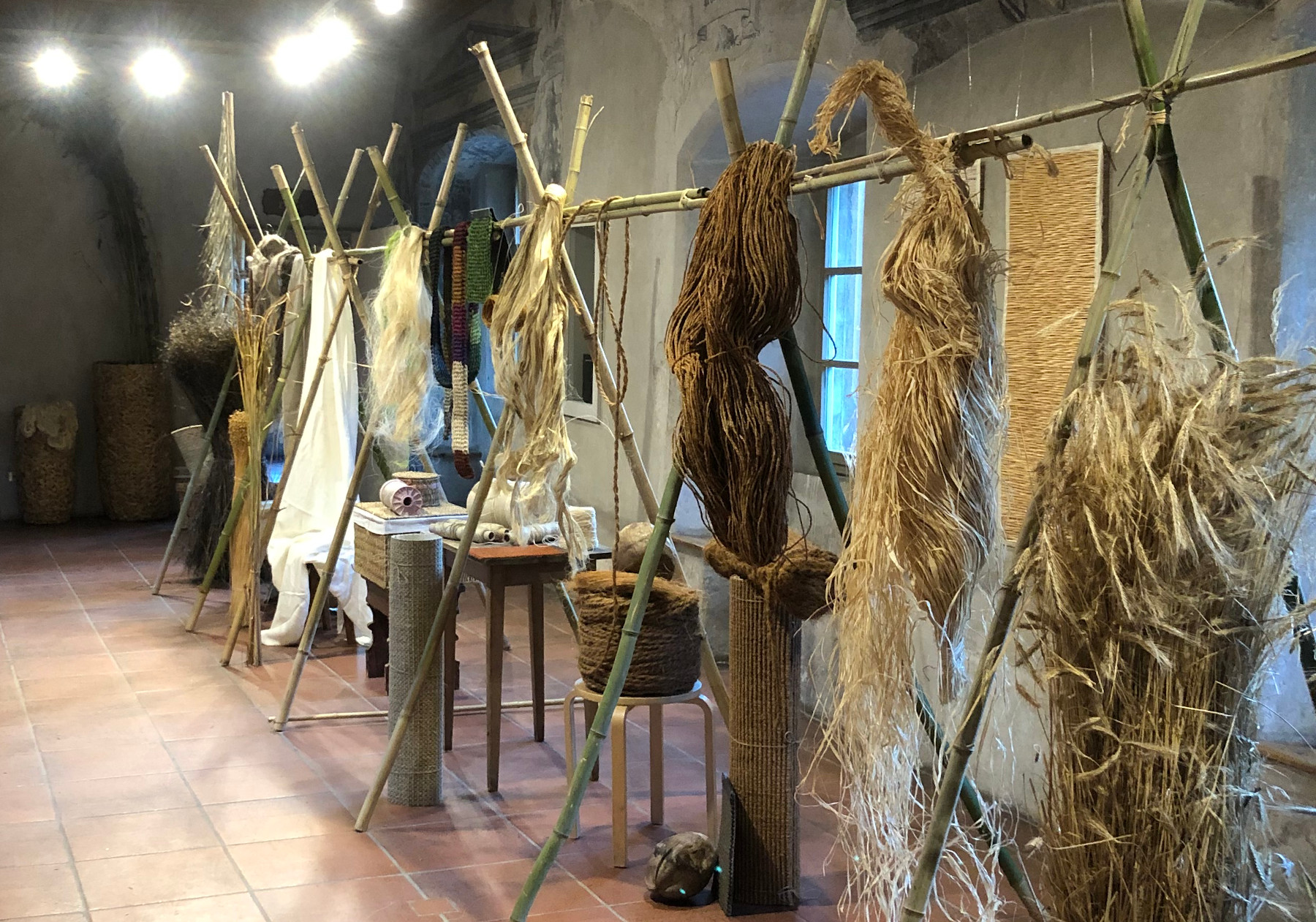Sustainability: Acting for the future
The theme of sustainability has always run like a green thread through the Festival. In an increasingly fast-paced technological global world, crafts are a big part of solving future economic, societal and social problems. The skills and abilities of craftsmanship help us to look responsibly at what we do and how we do it, to value the man-made products we acquire and the resources we use as limited. Handicraft with responsibility is a future-oriented working principle that calls for a new way of thinking about entrepreneurial action, because “a successful free society will always be to a large extent a tradition-bound society”.
Natural fibres: Raw materials of the future
Visitors showed great interest in the “Plant Fibers” exhibition set up for the first time in the Trend Zone in the Thun Hall of Maretsch Castle. The exhibition of textile plants and products derived from them from the archives of the European Textile Academy offered an exciting insight into the numerous possibilities of using and processing natural fibres. The enthusiasm of the visitors showed that the initiative is recognised as an important source of information and inspiration for the entire sector. We are constantly developing this path with the aim of always keeping an eye on the aspects of sustainability and implementing resulting guidelines.
Green Deal and the European Strategy for the Textile Sector
“Transforming the European Union into a just and prosperous society with a modern, resource-efficient and competitive economy, with zero net greenhouse gas emissions in 2050 and where economic growth is decoupled from resource use”.
The European Green Deal is a policy document from the European Commission in the form of a Communication to Parliament in December 2019, committing the EU to ambitious environmental challenges. For industry, this means targets such as: no pollution, restoration of ecosystems and biodiversity, decarbonisation of energy sources, introduction of circular production models. The textile industry is explicitly mentioned as a “priority resource-intensive sector” to which a specific action plan applies.
The European Commission is aware that the ambitious vision of the Green Deal means a transformation process and costly efforts for some sectors and member states. It therefore envisages “a coherent use of all policy levers: Regulation and standardisation, investment and innovation, national reforms, dialogue with the social partners and international cooperation. The European Pillar of Social Rights will serve as a guide to ensure that no one is excluded from this process”.
But even that may not be enough. The Green Deal will also have an impact on international trade policy if non-EU countries do not take measures consistent with European ambitions. Countervailing duties are also foreseen so that the price of imports takes into account the carbon footprint and environmental impact, while respecting WTO rules. In addition, there is a largely opaque certification system of textile products.
The goal of a circular economy model directly affects the textile sector, which is obliged to use resources more efficiently and to reduce and recycle waste. The extension to textiles of the EPR (Extended Producer Responsibility) regulations, which place the cost of disposing of products at the end of their life on companies, is an obligation established in the European Circular Economy Directive in 2018 and will come into force in Italy in September 2020. The law foresees the creation of consortia for the recycling of used textile products by 2022, financed by contributions from companies, as is already the case today.
In addition to the many policy initiatives that need to be aligned with the Green Deal, there is the EU Strategy for Sustainable Textiles, on the definition of which a public consultation was launched in March 2021. Ambitious goals, but also great opportunities for the competitiveness of European companies in the textile sector.


